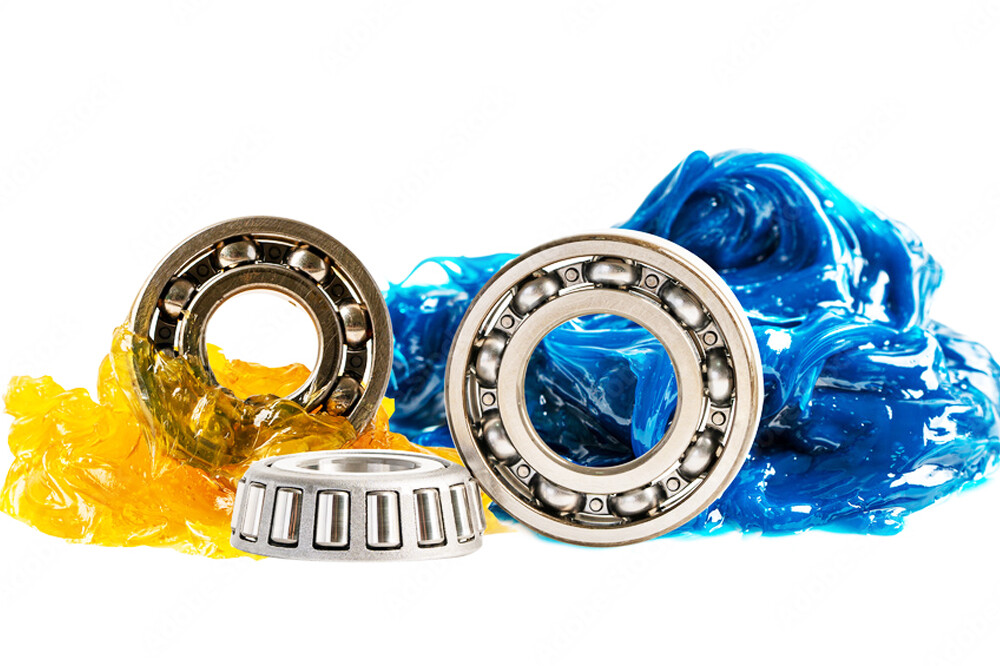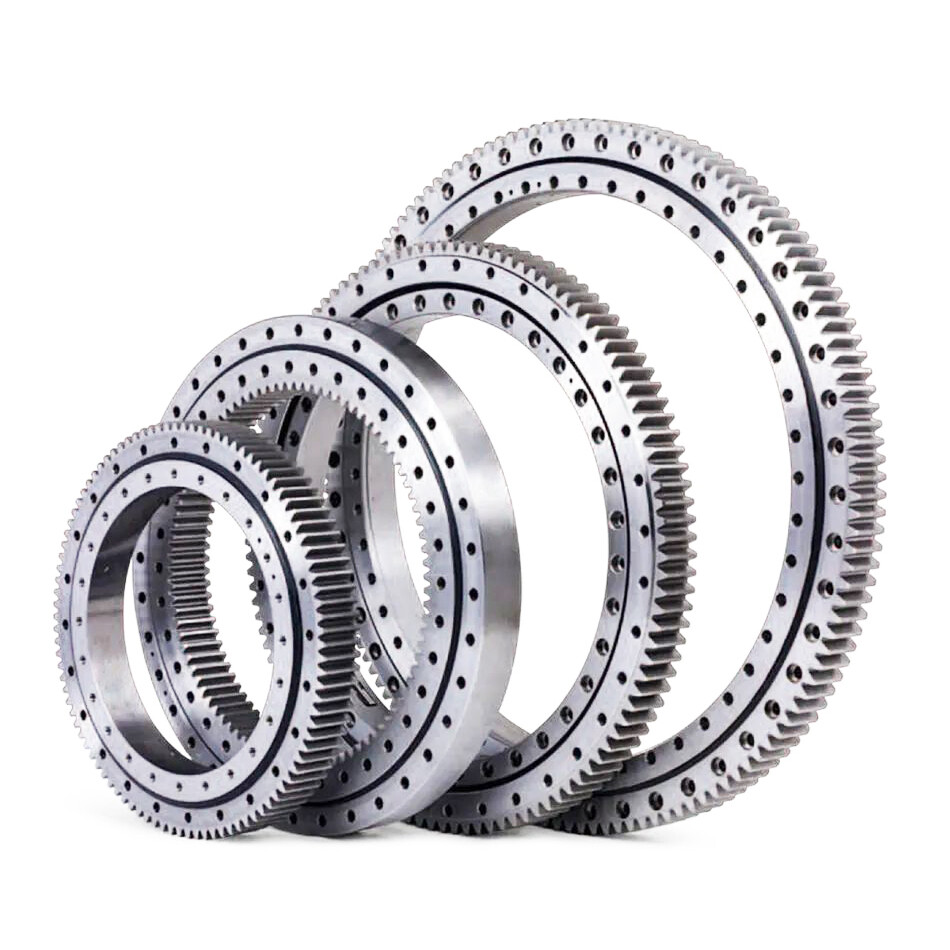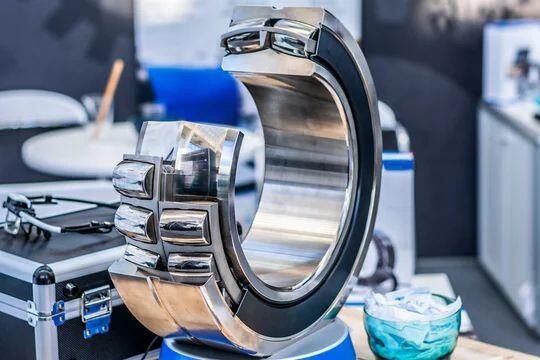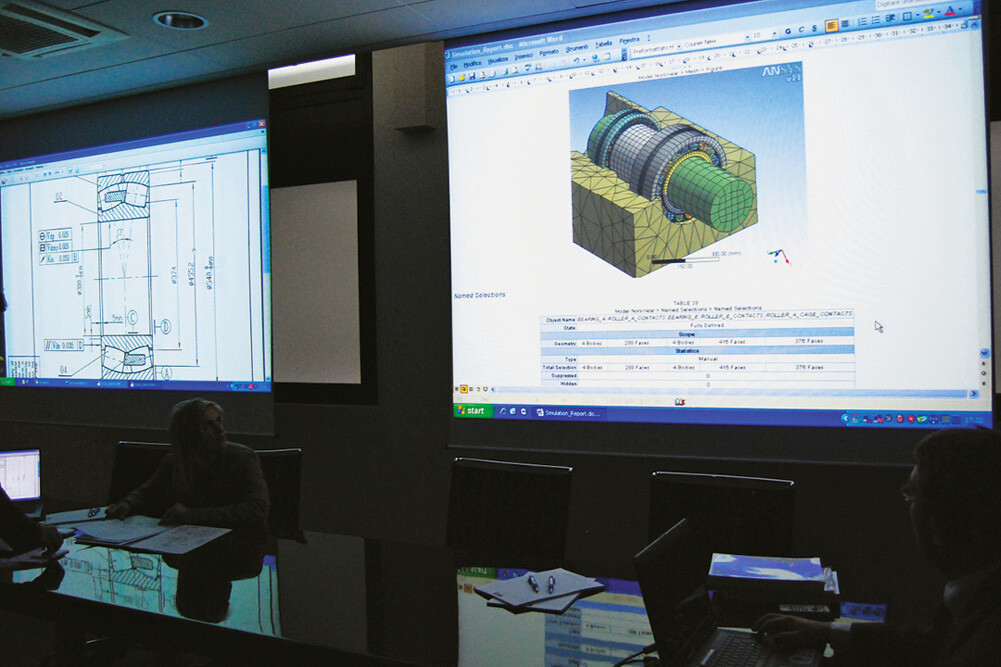
Bearing Manufacturer & Supplier
Specialize in ball bearings, roller bearings, thrust bearings, thin section bearings etc.
Bearing Types You Should Know
The main function of the bearing is to support the mechanical rotating body, prevent direct contact between two relatively moving elements, and reduce the friction coefficient of the mechanical load during the transmission of the equipment. This prevents friction, heat, and ultimately wear and tear on the part. It also reduces energy consumption as the sliding motion is replaced by low-friction rolling. They also transfer the load of the rotating elements to the housing. The load can be radial, axial or a combination of both. As mentioned above, bearings also restrict the freedom of movement of the moving parts to predetermined directions.
Bearings are divided into radial bearings and thrust bearings according to the bearing direction or the nominal contact angle.
According to the type of rolling element, it is divided into ball bearing, roller bearing.
According to whether it is self-aligning, it is divided into self-aligning bearings, non-aligning bearings (rigid bearings).
According to the number of rows of rolling elements, it is divided into single-row bearings, double-row bearings, and multi-row bearings.
According to whether the parts can be separated, they are divided into separable bearings and non-separable bearings.
In addition, there are classifications by structure shape, and size.
This article mainly shares the characteristics, differences and corresponding uses of 15 common bearings according to the types of ball bearings and roller bearings.


Table of Contents
ToggleBall bearings
Ball bearings are one of the most commonly used bearing types. It consists of a row of balls that act as rolling elements. They are trapped between two ring-shaped metal pieces. These metal sheets are called cages. The inner ring is free to rotate, while the outer ring is stationary.
Ball bearings provide very low friction during rolling, but have limited load carrying capacity. This is because the contact area between the ball and the raceway is very small. In addition to radial loads, they can also withstand axial loads in both directions.
Ball bearings are used to control the oscillating and rotating motions. For example, in electric motors where the shaft is free to rotate but the motor housing is not, ball bearings are used to connect the shaft to the motor housing.

Depending on the application, different types of ball bearings are available.
Advantages of ball bearings:
Good wear resistance
Do not need much lubrication
Provide low friction, thus little energy loss
Long service life
Easy to replace
Small general dimensions
Comparatively cheap
Can handle thrust loads
Disadvantages of ball bearings:
May break due to shocks
Can be quite loud
Cannot handle large weights
Rolling bearings contain rolling elements in the shape of balls or cylinders. We know that it is easier to roll a wheel than slide it on the ground as the magnitude of rolling friction is lower than sliding friction. The same principle is in work here. Rolling element bearings are used to facilitate the free movement of parts in rotational motion.
Even when we need linear motion in applications, it is easy to convert rotational motion to sliding motion. Consider an escalator or a conveyor. Even though the motion is linear, it is powered by rollers that are driven by motors.
Another example is a reciprocating pump that can convert rotational energy from a motor into translational motion with the help of linkages. In each of these applications, ball bearings are used to support motor shafts as well as shafts of other rollers in the assembly.

Rolling elements carry the load without much friction as the sliding friction is replaced with rolling friction. Rolling element bearings can be subdivided into two major types: ball bearings and roller bearings.
Structurally, each ring of a deep groove ball bearing has a continuous grooved raceway whose cross-section is about one-third of the circumference of the ball at the equator. Deep groove ball bearings are mainly used to bear radial loads, and can also bear certain axial loads.
When the radial clearance of the bearing increases, it has the performance of an angular contact ball bearing and can bear alternating axial loads in two directions. Compared with other types of bearings of the same size, this type of bearing has a small friction coefficient, high limit speed and high precision. It is the preferred bearing type for users when selecting models.

Main applications: automobiles, tractors, machine tools, electric motors, water pumps, agricultural machinery, textile machinery, etc.
There is a contact angle between the ring and the ball. Standard contact angles are 15°, 30° and 40°. The larger the contact angle, the greater the axial load capacity. The smaller the contact angle is, the better it is for high-speed rotation. Bear radial load and one-way axial load. The two single-row angular contact ball bearings with combined structure on the back share the inner and outer rings and can simultaneously bear radial loads and bidirectional axial loads.

Single-row: machine tool spindles, high-frequency motors, gas turbines, centrifugal separators, front wheels of small cars, differential pinion shafts.
Double rows: Oil pumps, Roots blowers, air compressors, various transmissions, fuel injection pumps, printing machinery.
Double-row steel balls, the raceway of the outer ring is an inner spherical surface, so it can automatically adjust the misalignment of the shaft caused by the deflection or misalignment of the shaft or shell. Tapered bore bearings can be easily mounted on the shaft using fasteners. withstand radial loads.

Main application: woodworking machinery, textile machinery transmission shaft, vertical self-aligning bearing with seat.
A thrust bearing permit rotation between parts, but they are designed to support a high axial load while doing this (parallel to the shaft). Higher speed applications require oil lubrication. Generally, they are composed of two washers (raceways) which may be grooved the rolling balls elements which are typically caged. As opposed to roller thrust bearings, ball thrust bearings can generally operate at higher speeds but at lower loads.

Main uses: automobile steering pin, machine tool spindle.
5. Four-point contact ball bearings
It can bear radial load and bidirectional axial load. A single bearing can be replaced by a front or rear combination of angular contact ball bearings. It is suitable for bearing pure axial load or synthetic load with large axial load component. This bearing can withstand any orientation. When the axial load of the ferrule is constant, one of the contact angles can be formed, so the ferrule and the steel ball are always in contact with both sides and three knife points of any contact line.

Main application: aircraft jet engine, gas turbine.
6. Outer spherical ball bearing with seat
The spherical insert ball bearing with seat is composed of an insert spherical ball bearing with sealing rings on both sides and a casting (or steel stamping) bearing seat. The internal structure of the spherical insert ball bearing is the same as that of the deep groove ball bearing, but the inner ring of this bearing is wider than the outer ring, and the outer ring has a truncated outer surface, which can automatically align with the concave spherical surface of the housing.

Main application: mining, metallurgy, agriculture, chemical industry, textile, printing and dyeing, conveying machinery, etc.
This type of bearing has spherical rollers between the outer ring of the spherical raceway and the inner ring of the double raceway. According to the different internal structures, it is divided into four types: R, RH, RHA, and SR. The bearing center is consistent, with self-aligning performance, which can automatically adjust the shaft misalignment caused by the deflection or misalignment of the shaft or shell, and can bear radial load and bidirectional axial load.

Main application: papermaking machinery, reducer, railway vehicle axle, rolling mill gearbox seat, rolling mill roll, crusher, vibrating screen, printing machinery, woodworking machinery, various industrial reducers, vertical self-aligning bearing with seat.
In this type of bearing, the spherical rollers are arranged obliquely. Because the raceway surface of the raceway is spherical, it has self-aligning performance, which can allow the shaft to have a certain inclination, and the axial load capacity is very large. Radial loads are generally lubricated with oil.

Main application: hydraulic generators, vertical motors, ship propeller shafts, rolling mills, tower cranes, coal mills, extrusion machines, rolling screw reducers for molding machines.
These bearings have truncated rollers guided by large ribs on the inner ring. This design makes the vertices of the conical surfaces of the inner ring raceway, outer ring raceway and roller rolling surfaces intersect at the centerline of the bearing. point above. Single-row bearings can bear radial loads and one-way axial loads, double-row bearings can bear radial loads and two-way axial loads, and are suitable for heavy loads and shock loads.

Main application: Automobile: front wheel, rear wheel, transmission, differential pinion shaft. Machine tool spindles, construction machinery, large agricultural machinery, railway vehicle gear reduction devices, rolling mill roll necks, reduction devices.
10. Thrust roller bearings
Thrust roller bearings are used for shafts that mainly bear axial loads, and the warp load is a composite load, but the warp load should not exceed 55% of the axial load. Compared with other thrust roller bearings. This kind of bearing has a low coefficient of friction, high speed and self-aligning ability. The rollers of the 29000 bearing are asymmetric spherical rollers, which can reduce the relative sliding between the rollers and the raceway during operation. The rollers are long, large in diameter, large in number and large in bearing capacity. Usually lubricated with oil. Grease lubrication can be used for individual low speed situations.

Main application: hydroelectric generator, crane hook.
11. Cylindrical roller bearings
The rollers of cylindrical roller bearings are usually guided by two ribs of a bearing ring. The cage roller and guide ring form a combination that can be separated from another bearing ring, which is a separable bearing.
This type of bearing is easy to install and disassemble, especially when the inner and outer rings are required to have an interference fit with the shaft and the housing. Such bearings are generally only used to bear radial loads, and only single-row bearings with ribs on both inner and outer rings can bear small stable axial loads or large intermittent axial loads.

Main applications: large motors, machine tool spindles, axle boxes, diesel engine crankshafts, automobiles, counting boxes, etc.
12. Thrust cylindrical roller bearings
It consists of washer-shaped raceway rings (shaft rings, seat rings), cylindrical rollers and cage assemblies. Cylindrical rollers are processed with convex surfaces, so the pressure distribution between the rollers and the raceway surface is uniform, and can bear unidirectional axial loads. The axial load capacity is large and the axial rigidity is strong.

Main applications: oil drilling rigs, ironmaking and steelmaking machinery.
13. Thrust needle roller bearing
Separable bearings are composed of raceway rings, needle rollers and cage components, which can be combined with stamped thin raceway rings or machined thick raceway rings. Non-separable bearings are integrated bearings composed of precision stamped raceway rings, needle rollers and cage assemblies, which can withstand unidirectional axial loads. This type of bearing takes up little space, which is conducive to the compact design of the machine. Only the needle roller and cage assembly is used, and the mounting surface of the shaft and the housing is used as the raceway surface.

Main application: Transmission devices for automobiles, field cultivators, machine tools, etc.
14. Thrust tapered roller bearings
These bearings are fitted with truncated rollers (spherical at the big end) which are precisely guided by the ribs of the raceway rings (shaft rings, races). The vertices of each conical surface intersect at a point on the center line of the bearing. One-way bearings can bear one-way axial loads, and two-way bearings can bear two-way axial loads.
Main applications: Crane hooks, oil drilling rig swivels.
15. Slewing ring
A slewing ring or slewing ring is a rotating rolling bearing that typically supports a heavy but slowly turning or oscillating load, usually a horizontal platform such as the facing platform of a conventional crane, oscillating palletizer or wind-horizontal axis windmill. (“Slew” means to turn without changing position.) A slewing ring usually has teeth integral to the inner or outer ring for driving the platform relative to the base.

Application:Construction: Crane rubber tires for bulk/waste handling, shock vibration, handling containers – gantry cranes and reach stackers, concrete pumps and mixers,Medical: radiotherapy applications, all production steps in the pharmaceutical industry, mixing, filling, cleaning, etc.
Water treatment, offshore mining, forestry industry, radar military, fire-fighting vehicle lifts, etc.



